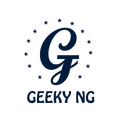The Boundary Between Science Fiction and Medical Reality continues to blur as researchers develop microscopic solutions to humanity’s most pressing medical challenges and diseases.
Nanomedicine, once confined to the realm of futuristic novels, now represents a rapidly expanding field that promises to revolutionize how we diagnose, treat, and prevent diseases.
At its core, nanomedicine harnesses materials and devices measuring between 1 and 100 nanometers, roughly 80,000 times smaller than the width of a human hair. These tiny structures exhibit unique properties that differ dramatically from their larger counterparts, opening unprecedented opportunities for precise medical interventions at the cellular level.
The emergence of nanomedicine stems from our growing understanding that many biological processes occur naturally at the nanoscale. By working at these dimensions, medical researchers can interact directly with cells, proteins, and DNA in ways previously impossible.
This approach enables targeted treatments that can distinguish between healthy and diseased tissue with remarkable accuracy.
Recent breakthroughs have captured global attention, including the development of self-replicating organic robots called xenobots.
Such innovations signal that we stand at the threshold of a new era in healthcare, where microscopic agents will serve as our allies in combating cancer, genetic disorders, and autoimmune diseases.
Table of Contents
Transforming Disease Detection and Diagnosis
Modern diagnostic methods often detect diseases only after significant progression has occurred. Nanomedicine changes this paradigm by enabling detection at the earliest stages of disease development. Nanoparticles can bind to specific biomarkers present in cancer cells, allowing clinicians to identify tumors when they are still highly treatable.
These diagnostic nanoparticles enhance imaging techniques by improving contrast and biodistribution of imaging agents. Rather than relying on broad-spectrum scans, doctors can deploy targeted nanoparticles that seek out specific cellular abnormalities. This precision reduces false positives whilst increasing diagnostic accuracy, ultimately leading to better patient outcomes.
The speed of diagnosis also improves dramatically with nanotechnology. Rapid diagnostic tools can deliver results in minutes rather than days, enabling immediate treatment decisions that can prove lifesaving in emergencies.
Revolutionary Drug Delivery Systems
Traditional drug delivery faces numerous challenges: medications often affect healthy tissues alongside diseased ones, leading to unwanted side effects. Nanomedicine addresses this problem through sophisticated drug delivery systems that transport medications directly to their intended targets.
Nanocarriers encapsulate drugs and release them only when they reach specific cellular destinations. This targeted approach maximizes therapeutic benefits while minimizing harmful effects on healthy tissue. Cancer treatment particularly benefits from this precision, as nanoparticles can deliver chemotherapy drugs directly to tumor cells whilst preserving surrounding healthy tissue.
These systems also improve drug stability and bioavailability. Many promising medications fail in clinical trials because they break down before reaching their targets or cannot penetrate cellular barriers effectively. Nanoparticle encapsulation protects drugs during transport and enhances their ability to cross biological barriers.
Advancing Regenerative Medicine
Regenerative medicine seeks to repair or replace damaged tissues and organs, and nanomedicine provides crucial tools for this ambitious goal. Nanoscale scaffolds mimic the natural structure of tissues, providing frameworks that guide cellular regeneration and wound healing.
These scaffolds create optimal microenvironments for tissue growth by controlling mechanical, biochemical, and biocompatible factors at the cellular level. Artificial bone implants made from biocompatible nanoparticles demonstrate superior adhesion to natural bone tissue compared to traditional materials, resulting in longer-lasting implants with improved functionality.
Nanomedicine also contributes to treating chronic conditions like diabetes. Nanotechnology-based devices monitor glucose levels continuously and deliver insulin with precise timing and dosing, dramatically improving the quality of life for patients managing this condition.
Market Growth and Future Opportunities
The nanomedicine market experiences remarkable expansion, with projections suggesting growth from approximately $293 billion in 2022 to potentially $563 billion by 2031. This growth reflects substantial investments in research and development, alongside increasing demand for personalized medical solutions.
Healthcare systems worldwide recognize nanomedicine’s potential to address rising healthcare costs through more effective treatments and earlier disease detection. As populations age and chronic diseases become more prevalent, the efficiency gains offered by nanomedicine become increasingly valuable.
Innovation accelerates through multidisciplinary collaboration between biologists, chemists, engineers, and medical professionals. These partnerships foster comprehensive solutions that address complex health challenges from multiple angles.
Overcoming Implementation Challenges
Despite promising potential, nanomedicine faces significant hurdles before widespread adoption becomes possible. Safety and toxicity concerns top the list of challenges, as nanomaterials interact with biological systems in ways that differ from conventional materials.
Regulatory frameworks struggle to keep pace with rapid technological advancement. Health authorities must establish clear guidelines for evaluating nanomedicine safety, efficacy, and quality whilst avoiding regulations that stifle innovation.
Cost and accessibility present additional challenges. Advanced nanotechnology requires substantial investment in research, development, and manufacturing. Ensuring that nanomedicine benefits reach all populations, not just wealthy patients, requires careful policy consideration and healthcare system adaptation.
The Future of Precision Healthcare
Nanomedicine represents a fundamental shift towards precision healthcare that operates at the cellular level. As researchers overcome current challenges and develop new applications, we can expect dramatic improvements in disease detection, treatment effectiveness, and patient outcomes.
The convergence of nanotechnology with digital healthcare systems promises to create truly personalized medicine, where treatments adapt to individual patient needs with unprecedented precision. This transformation will not happen overnight, but the foundation exists for a future where microscopic medical interventions deliver macroscopic improvements in human health and quality of life.
